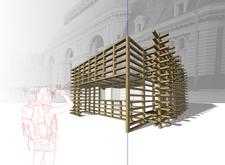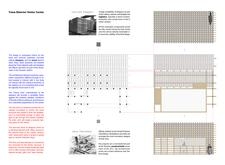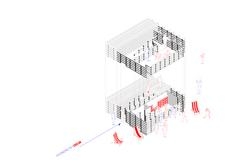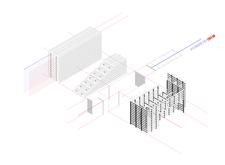5 key facts about this project
### Overview
Located along the Trans-Siberian Railway, the Visitor Center aims to enhance the travel experience by integrating local materials and functional design. The structure serves as a point of interaction for visitors, allowing them to engage with the surrounding landscapes while emphasizing the cultural significance of rail travel in Russia.
### Materiality and Sustainability
The visitor center prominently features two materials: concrete railway sleepers and wood. Concrete sleepers provide a robust foundation, engineered to withstand the harsh Russian climate and sourced locally to improve logistical efficiency. The use of wood adds warmth to the structure, designed in a lattice configuration that promotes air circulation and natural light. This combination reflects a commitment to sustainable practices, minimizing the carbon footprint associated with construction.
### Spatial Configuration and Visitor Engagement
The layout of the center is intentionally designed to promote exploration and accessibility. Key features include a staircase integrated into the sleeper foundation, which leads to an observation deck offering panoramic views. Communal gathering areas encourage social interaction among travelers, while dedicated service spots such as shops and information desks enhance functionality. The overall design fosters a harmonious relationship between the built environment and the natural scenery, supporting both visitor needs and cultural narrative.





















































